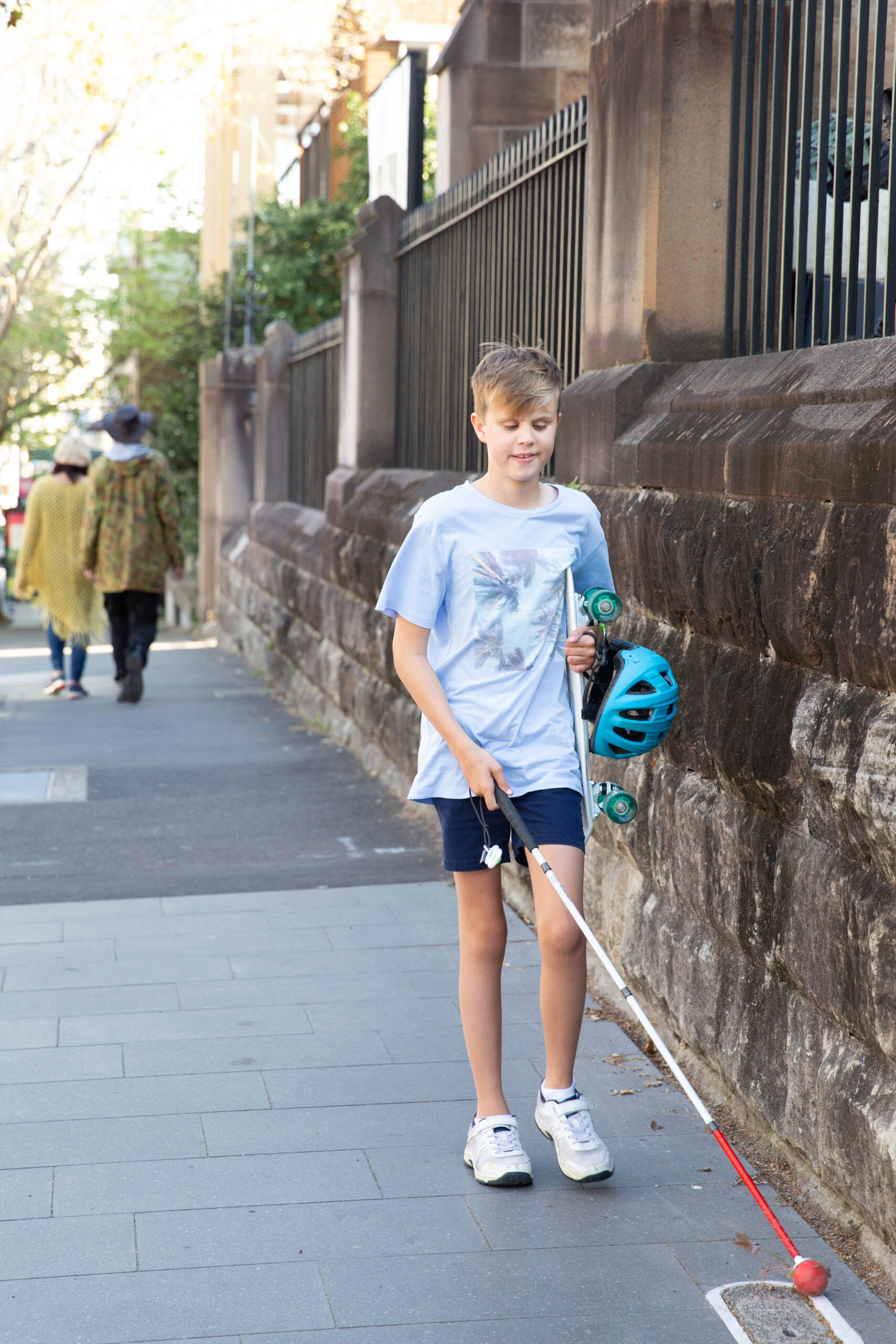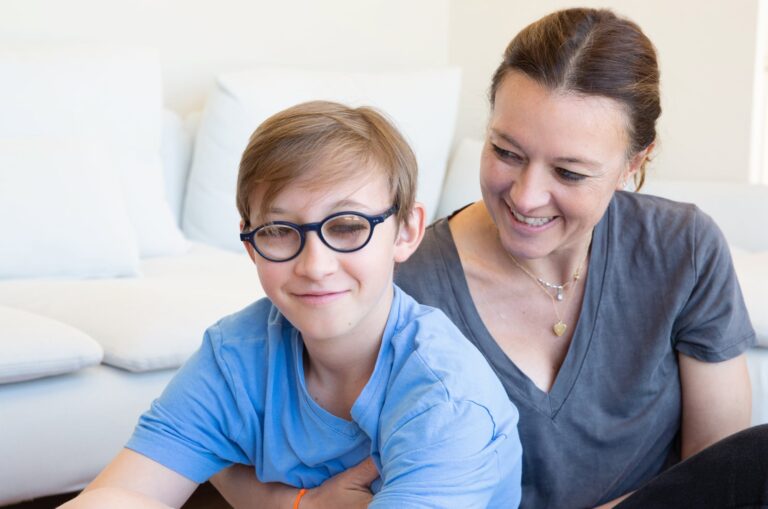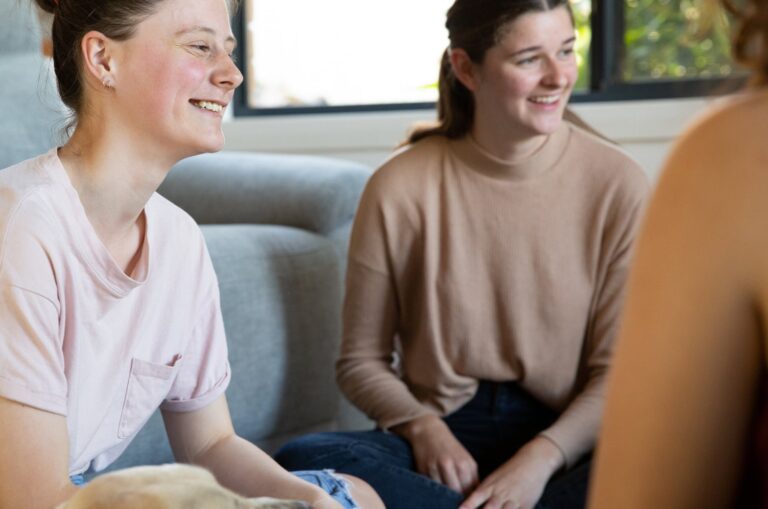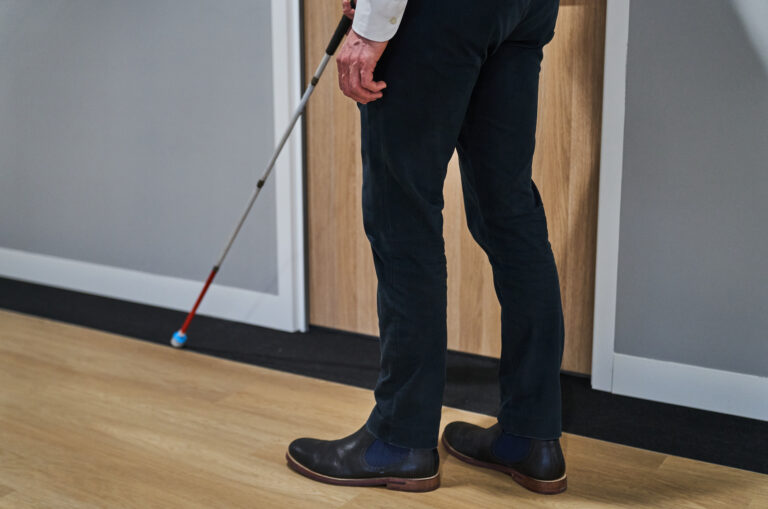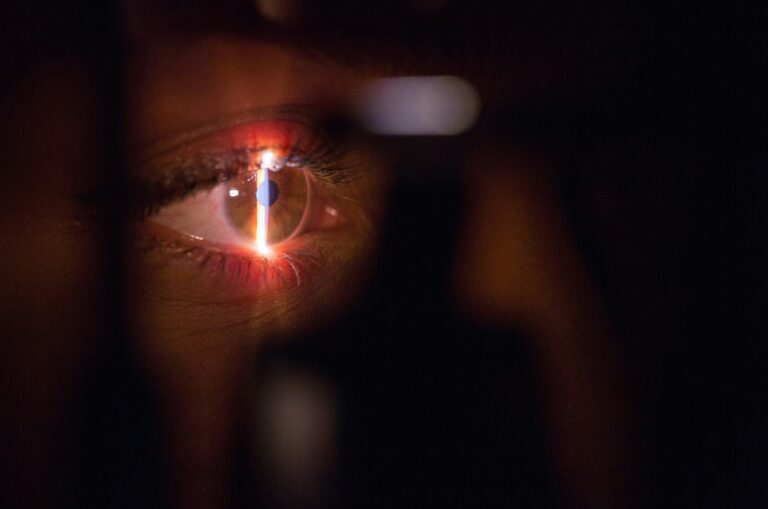A supportive family – from immediate carers through to other family members – can play an important role in the practical and emotional wellbeing of someone living with low vision or blindness.
If someone in your family has been diagnosed with low vision or blindness, there is support available to you so you can maintain your own emotional wellbeing and continue to help your loved ones navigate their own journey with low vision or blindness. Guide Dogs works closely with family members through a range of services so they’re equipped to be carers and supporters of their loved ones.
Understanding low vision
‘Low vision’ is a term used to describe a range of conditions that affect sight, with many conditions varying in nature and severity across a spectrum. It includes conditions such as macular degeneration, glaucoma, cataracts, diabetic retinopathy and retinitis pigmentosa. You can learn more about low vision and check out helpful articles on our ‘About Low Vision’ page.
According to the Australian Institute of Health and Welfare, approximately 13 million Australians have one or more chronic eye conditions. 7.2 million of these live with hyperopia (long-sightedness) and 6.3 million with myopia (short-sightedness). 131,000 live with complete or partial blindness.
Because vision conditions are so varied in nature and severity, the role of family in supporting someone with low vision is equally as diverse. Some family members might take on a regular caring role whilst others might be relied upon for irregular or just emotional support.
Practical support you can provide
One of the most common concerns from family members caring for someone with low vision or blindness revolves around guiding them through a built environment. Here are some tips for helping your loved one navigate public spaces.
- Ask: Talk with your loved one and ask questions about how they want to be supported. Then remember to always ask before assisting them.
- Offer: Rather than taking the arm or hand of your loved one, allow them to take your own arm so they can manage their balance and movements more actively.
- Communicate: Make sure you clearly inform your loved one of any upcoming steps, changes in terrain or direction as well as obstacles.
- Respect: It’s helpful to remember that you’re a support person for a loved one when assisting them. This can stop you from over-assisting them and instead anticipating their needs.
- Pause: It can be helpful to assist the person you are supporting take stock and orient themselves in new environments. This means not rushing through spaces but allowing for time to absorb and process different cues.
Other practical areas you can provide support with include the techniques mentioned below.
Creating a safe environment at home
Begin by decluttering pathways – removing objects like cords, loose rugs or unnecessary furniture that might pose a tripping risk – and then setting up designated locations for items that the person with low vision frequently uses, allowing them to access these themselves.
Guide Dogs provides Orientation and Mobility Skills services to support you in this process. You can help your loved one maintain a consistent layout in the home so that they can confidently navigate the space without unexpected obstacles. Guide Dogs can also advise on tactile markers, such as raised stickers, textured surfaces, or Braille labels through the home.
Getting around
Orientation and Mobility Skills training is invaluable, but you can play an important role to encourage your loved one and accompany them when getting around in public spaces so they can feel confident and develop independence.
Setting up technologies
Start by acquiring and helping to configure assistive devices such as screen readers and/or magnifiers. Voice-controlled smart home gadgets, like Amazon Alexa or Google Home, can also simplify everyday tasks and enhance accessibility. Guide Dogs can support you and your loved on in configuring devices and providing training for those with low vision or blindness to use various assistive technologies.
Researching and contacting professional support
Connecting with professional support services can significantly enhance the quality of life for someone with blindness. Begin by researching healthcare services, such as low-vision specialists, occupational therapists, or counsellors who focus on vision impairment. Organizations like Guide Dogs Australia offer invaluable mobility and orientation training. Look into government and nonprofit programs, such as the National Disability Insurance Scheme (NDIS), to access financial aid, assistive devices, or home modifications. Peer support groups, whether local or online, can provide emotional connection and shared experiences.
Providing and receiving emotional support
Receiving a diagnosis of low vision or blindness often brings with it emotional challenges for both the people receiving that diagnosis and their family members.
Psychology and counselling services can play a vital role in helping those living with low vision or blindness as well as their families, but carers and family members can also support their loved one’s emotional wellbeing simply by being present, encouraging them to express their feelings, and exploring ways to support their independence – from helping organise assistive technologies and accompanying them to appointments through to finding community, hobby and peer groups they might like.
It’s important to remember to look after your own emotional wellbeing. Guide Dogs services – from psychology and counselling through to peer groups and funding support – can help take pressure off immediate family and carers and provide important guidance on everything from assistive technology to accessing the NDIS.
Remember that you have your own journey with a loved one living with low vision or blindness, and to be aware of how you are coping. Seeking help if you need it and managing your own emotional health can help you continue providing support.
You might also like
Ready to continue?
Seems like you have filled this form earlier. Let’s pick up where you left off.

